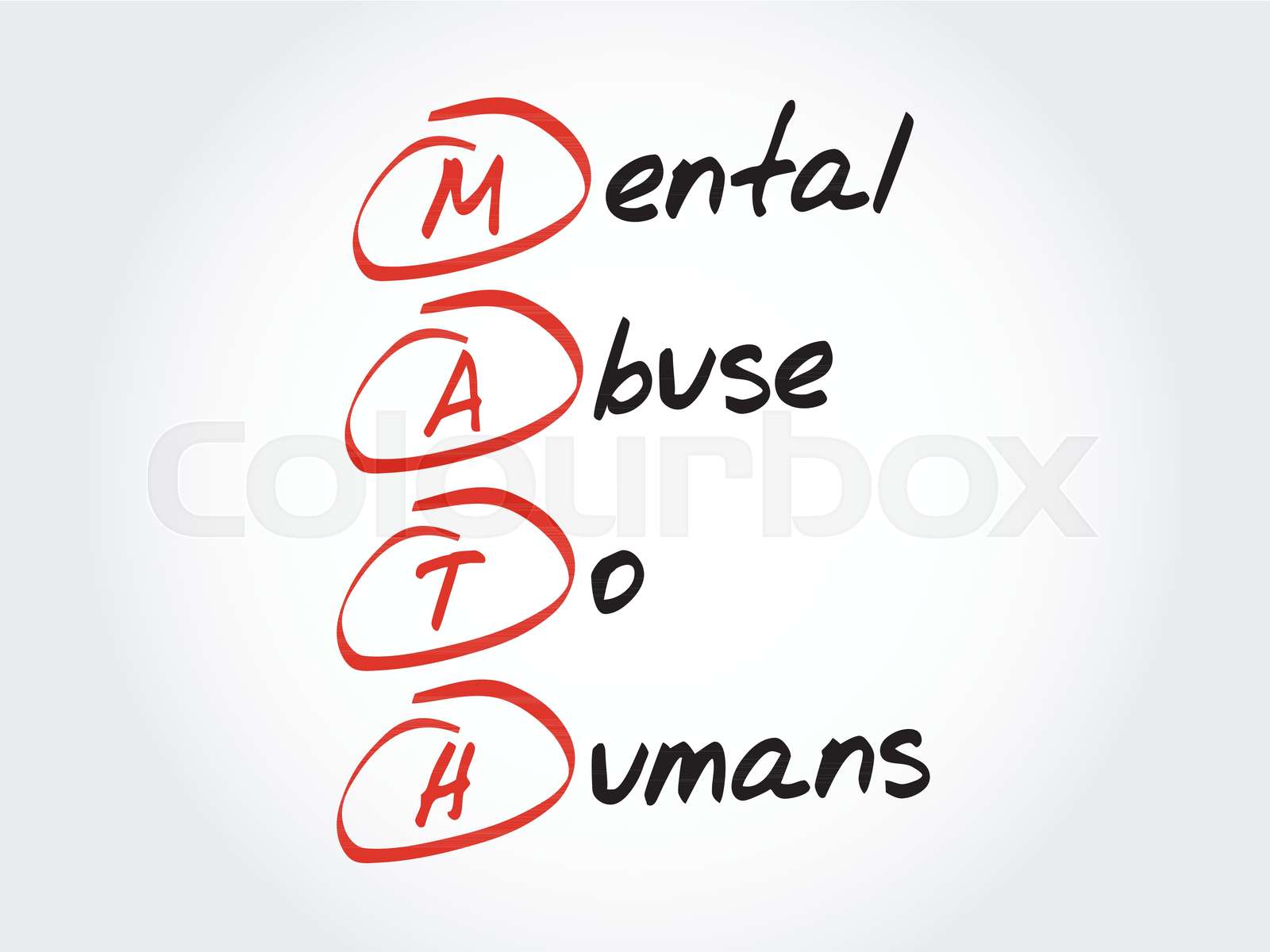In the world of mathematics, particularly within the realm of mental math, a contentious debate arises surrounding the use of writing. This discussion is not merely academic; it intertwines cognitive science, pedagogy, and the philosophy of learning. As we delve into this topic, we ask: is writing genuinely prohibited in mental math, or could it, in fact, serve as an ancillary tool that enhances one’s numerical prowess?
The primary purpose of mental math is to cultivate the ability to manipulate numbers swiftly and accurately without reliance on calculative devices. This practice commonly emphasizes speed, agility, and the fostering of an intuitive grasp of numerical relationships. One could assert that the essence of mental arithmetic lies in its transient nature. It is about working through numbers in real time, harnessing the mind’s raw capacity to synthesize and reason—qualities that are often purportedly diminished through written notation.
However, advocating for a strict prohibition on writing within mental math may paradoxically cultivate rigidity in a discipline that thrives on creativity and flexibility. Consider that mental math inherently necessitates a transformation of complex operations into manageable cognitive parcels. In this context, the use of jotting down notes or visual aids may serve a dual purpose: it can both clarify thought processes and facilitate a smoother cognitive flow.
The key lies in understanding the dichotomy of mental calculation and written calculation. Mental math demands a nuanced comprehension of numerical concepts, allowing individuals to visualize solutions and traverse through multiple stages of calculation without becoming bogged down by notation. Yet, for learners who grapple with abstract numerical reasoning, writing might serve as a beneficial scaffold. It can concreteify abstract concepts, particularly in younger individuals or those with learning differences. By sketching out steps, numbers, or even representations, learners can engage in a hybrid method that employs both mental agility and tangible reminders. This convergence could lead to a more profound mathematical understanding.
Moreover, examining historical and cultural perspectives reveals a broader spectrum regarding the use of writing in mental calculations. Many indigenous cultures and ancient civilizations relied on sophisticated oral traditions where the act of calculating was intimately tied to narrative forms; however, the introduction of written symbols created what some mathematicians refer to as a “cognitive offloading” phenomenon. In essence, writing allowed for a sort of mental ‘breathing space’, reducing the cognitive load required during complex computations.
This historical lens prompts the question of whether today’s pedagogical approaches are too dismissive of writing in mental math. While it is often assumed that the purist route to mastery entails eschewing the written word altogether, evidence suggests that incorporating elements of writing could, paradoxically, enhance overall mental calculation capability. For instance, when learners document their reasoning—be it through diagrams or numerical relationships—they may establish a richer cognitive framework for understanding mathematical principles.
It is also worth considering the implications of cognitive neuroscience on this discourse. The brain’s prefrontal cortex plays a critical role in working memory, and utilizing writing may mitigate the strain on this capacity. By distributing cognitive tasks between mental computation and physical notation, learners may find an optimal approach that caters to their unique learning styles. Thus, rather than opposing writing as counterproductive to mental math, one might advocate for a symbiotic relationship between the two methodologies: leveraging the strengths of each to bolster mathematical fluency.
Furthermore, writing can serve as a reflective tool, enabling learners to dissect their thought processes. Engaging in reflective practices is fundamental to learning; it fosters metacognition, or the awareness of one’s cognitive processes. By documenting their steps—even in mental math—individuals can uncover potential pitfalls in their reasoning and adapt future strategies accordingly. This reflection becomes paramount in a discipline where mistakes can often illuminate pathways to conceptual clarity.
In light of the pedagogical benefits discussed, educators are urged to rethink traditional doctrines surrounding writing’s role in mental mathematics. Curriculum designs could seamlessly integrate opportunities for learners to experiment with mental calculations in conjunction with written notes. Such practices would not only diversify skill acquisition strategies but also cultivate a climate of appreciation for various approaches to understanding math. Acknowledging individual differences is fundamental; some may thrive using only mental calculations, while others may find writing instrumental in achieving clarity and precision.
As we progress, the question may evolve from, “Is writing prohibited in mental math?” to “How can writing enhance our understanding of mental math?” Rather than enforcing stringent rules, the goal should focus on promoting an environment where learners feel empowered to employ multiple strategies that suit their distinctive cognitive profiles. By embracing rather than negating writing’s potential role in mental math, educators can foster a more inclusive and enriching mathematical experience.
In conclusion, the relationship between writing and mental math is multifaceted and deserves a more nuanced exploration. While the notion of strict prohibition may stem from the intention to enhance proficient numerical fluency, a broader, integrative approach may yield better outcomes. As the landscape of education continues to evolve, so too must our perspectives on the pedagogical tools available to enhance understanding and competence in mathematics. It is imperative to nurture curiosity, stimulate innovative thought processes, and ultimately, create a conducive learning environment that harmonizes various methodologies to enrich the mathematical experience.












